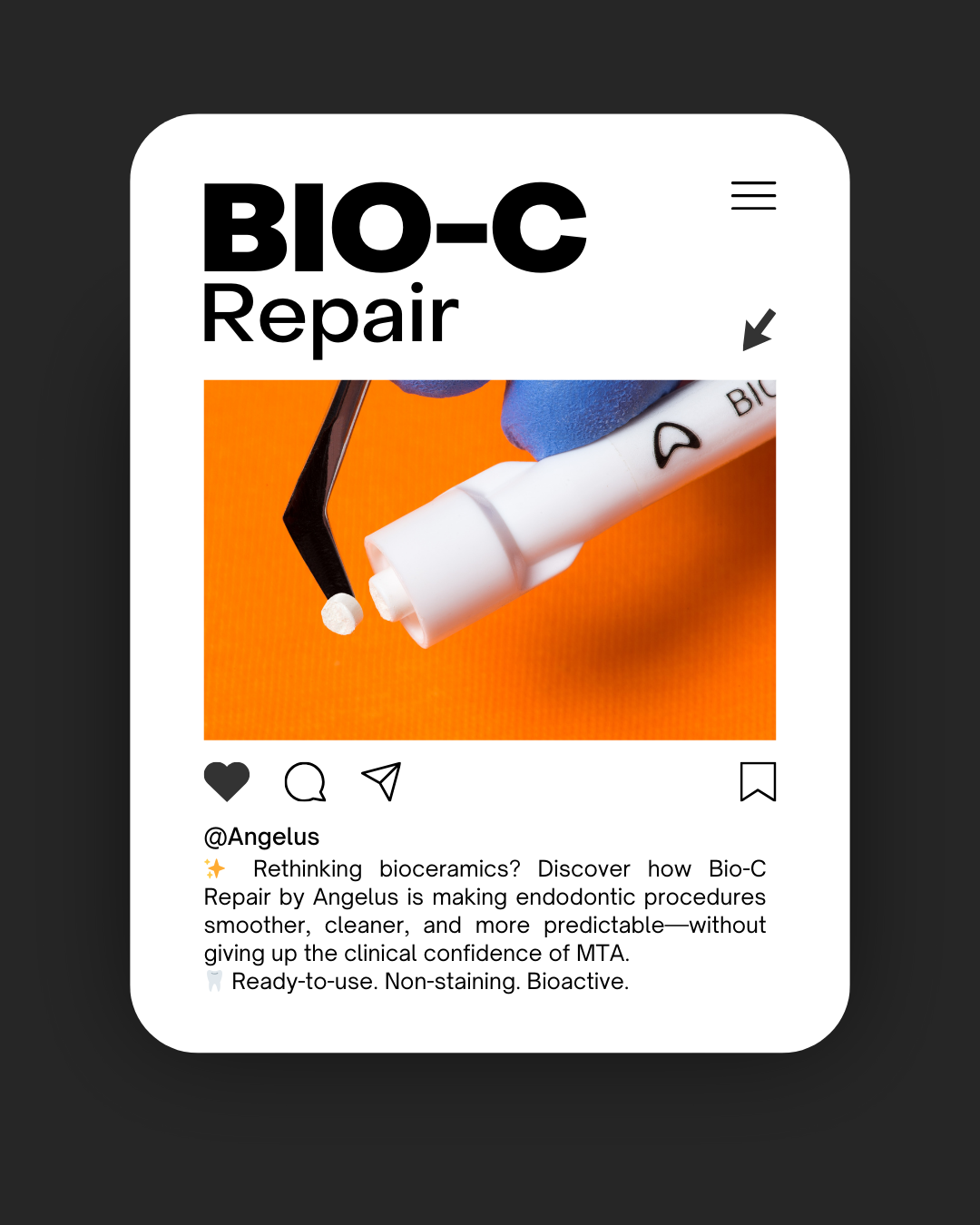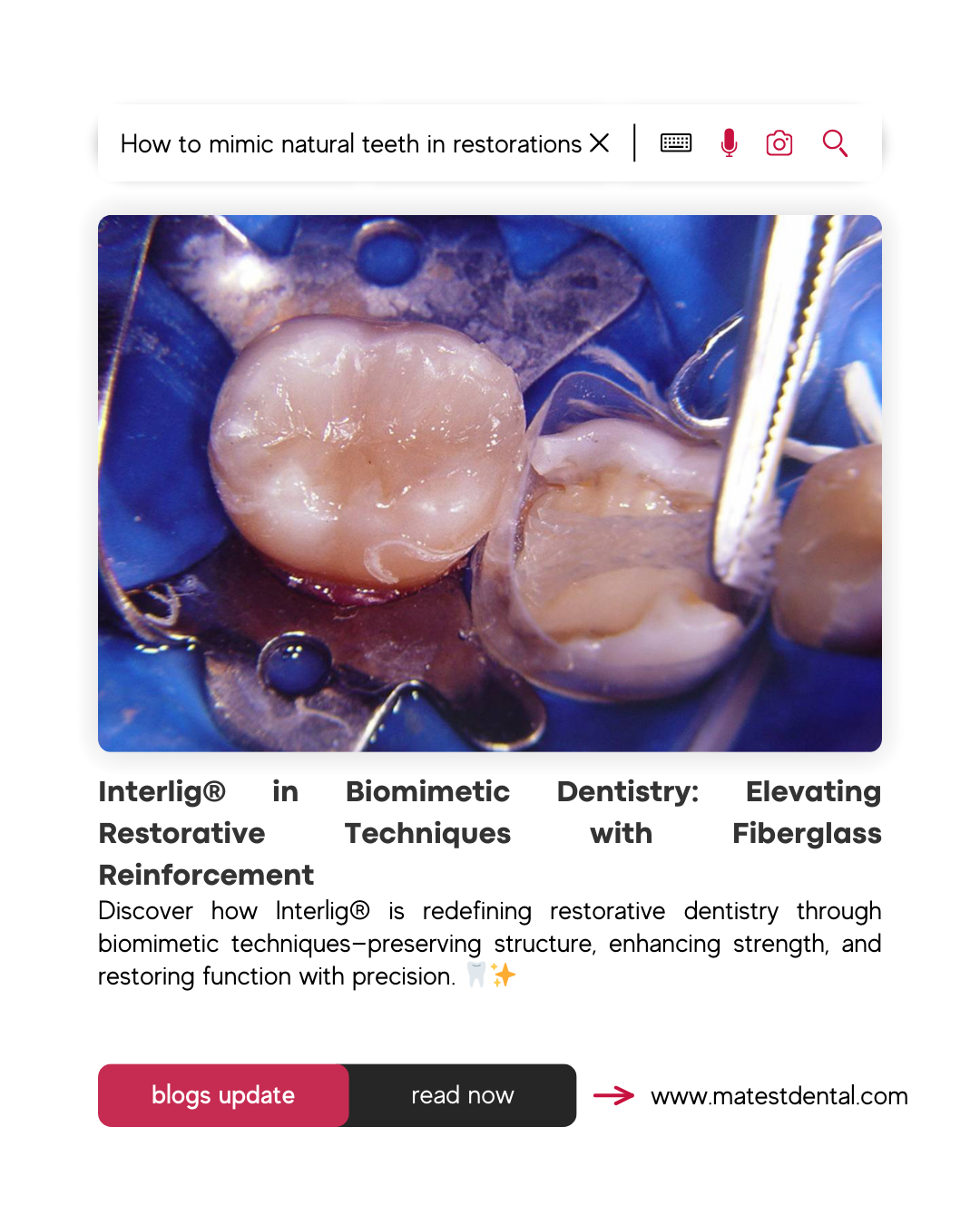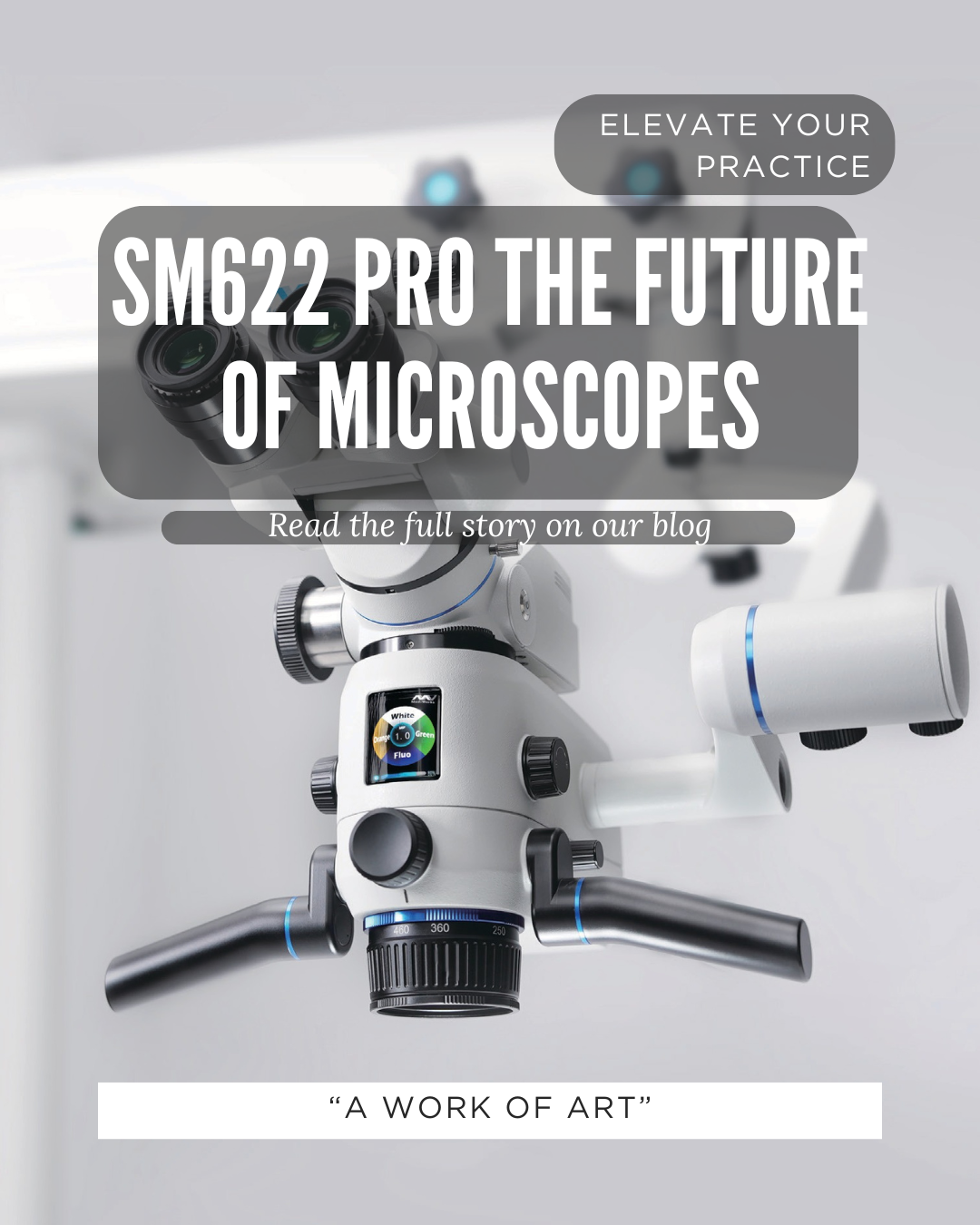Rethinking Bioceramics: Is It Time to Evolve Beyond MTA?
For years, Mineral Trioxide Aggregate (MTA) has been the go-to material for endodontic repairs and vital pulp therapy. Its legacy is built on a strong foundation—biocompatibility, sealing ability, and clinical success. But as materials science continues to evolve, so do the expectations of clinicians. Enter a new generation of bioceramic repair materials, like Bio-C Repair by Angelus—formulated not just to work, but to work smarter.
The MTA Era: A Trusted Foundation
There’s no question: MTA changed the game when it was introduced. It brought a new level of success to procedures like apexification, pulp capping, and perforation repair. Its ability to induce hard tissue formation and seal the root canal system remains impressive.
But with that said, MTA does come with a few quirks that most clinicians are all too familiar with:
• Handling challenges: Mixing the powder to the right consistency can be inconsistent and time-consuming.
• Long setting time: Waiting several hours—or even needing a second appointment—can interrupt workflow.
• Tooth discoloration: Especially in anterior cases, the risk of staining has always required careful consideration.
• Storage and waste: Opened jars and leftover mixes aren’t always reusable, adding to material costs.
These limitations have been widely accepted as part of the MTA package—but what if they didn’t have to be?
Enter Bio-C Repair: A New Perspective on Bioceramics
Bio-C Repair, developed by Angelus, represents a refined approach to bioceramic repair. It maintains everything clinicians appreciate about MTA—like high biocompatibility, alkaline pH, and calcium release—but eliminates the friction points that slow down procedures or introduce variability.
Some features that tend to stand out:
• Premixed Convenience: Supplied in a ready-to-use syringe, Bio-C Repair removes the guesswork. No mixing, no mess—just extrude and place.
• Non-Staining Formula: Thanks to zirconium oxide as the radiopacifier, there’s no risk of discoloration, which is a big plus in esthetic zones.
• Smooth Handling: Its putty-like consistency makes it easy to position precisely—even in challenging cases like perforations or resorptions.
• Reliable Sealing: A slight expansion upon setting helps it adapt perfectly to dentinal walls, enhancing the biological seal.
• Sets in the Presence of Moisture: A truly hydrophilic formula that embraces the clinical environment, rather than fighting it.
Clinically Speaking: Where Bio-C Repair Shines
Whether it’s direct pulp capping, perforation repair, apexification, or even retrograde fillings, Bio-C Repair offers versatility in every indication where MTA is traditionally used. And with its shorter setting time, you’re not tied down to multi-visit strategies unless absolutely necessary.
What’s more—clinical studies have shown Bio-C Repair to perform comparably (and in some cases better) than MTA in terms of sealing ability, cytocompatibility, and hard tissue formation. That’s not just innovation for the sake of novelty—that’s meaningful progress.
From Practice to Preference
The shift toward more advanced materials doesn’t happen overnight. Most clinicians aren’t looking to abandon what works—but they are open to tools that can make procedures smoother, reduce chair time, and deliver more predictable results.
That’s where Bio-C Repair finds its sweet spot. It isn’t about replacing MTA—it’s about refining what MTA started.
A Subtle Shift Worth Considering
If you’ve ever found yourself frustrated with the mixing process, or wishing for a faster set time without compromising biocompatibility, it might be time to explore what Bio-C Repair has to offer.
There’s a quiet movement among forward-thinking endodontists and general dentists toward ready-to-use bioceramics. And once you’ve experienced the ease of application, clean operatory workflow, and confidence in outcomes—it’s hard to go back.
Final Thought:
Materials evolve. So do the clinicians who use them. If you’ve relied on MTA in the past, you already know the power of bioceramics. Now imagine that power—streamlined.



